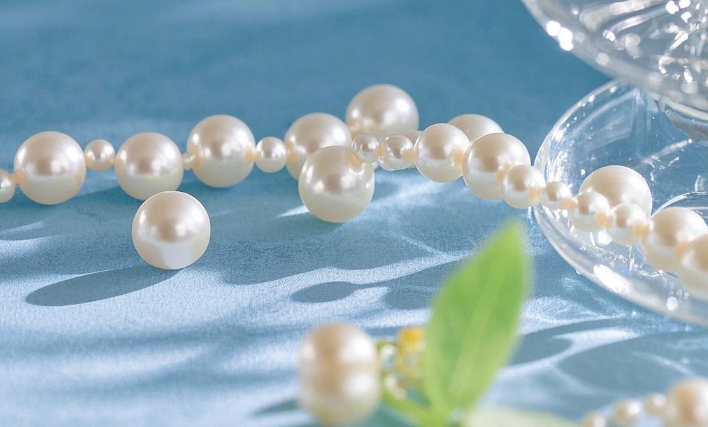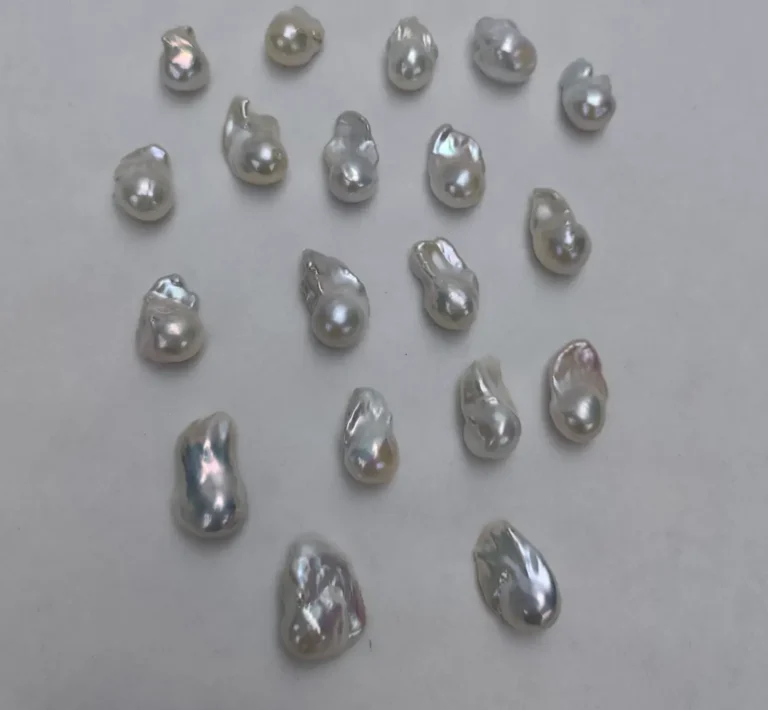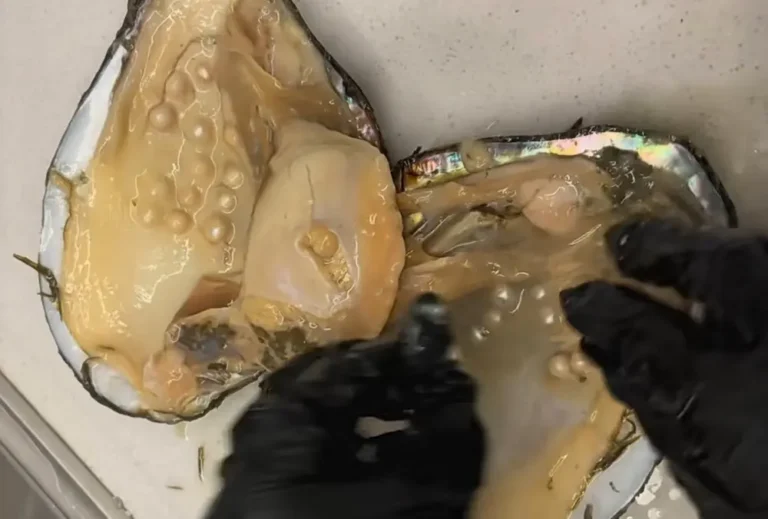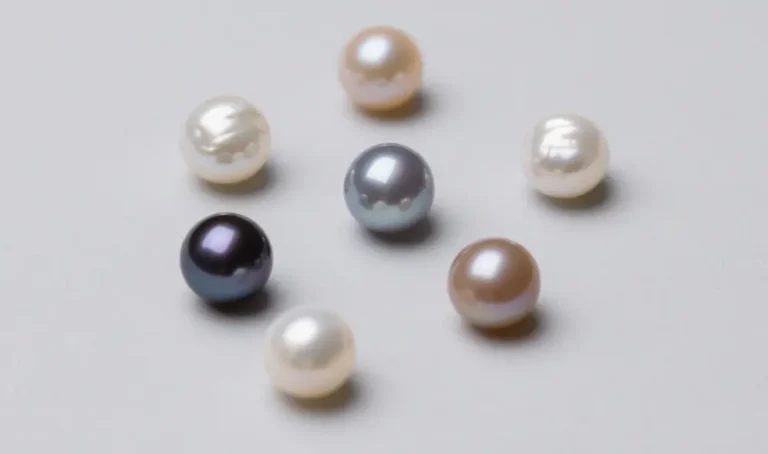Shopping for pearls can be overwhelming with so many choices and confusing terms! Whether you’re searching for the perfect necklace for a special event or investing in a piece you’ll pass down, knowing how to buy pearls the right way can save you serious money and make sure you’re getting exactly what you expect.
The pearl market’s really blown up lately, with tons of options from affordable freshwater to fancy South Sea pearls popping up everywhere online. But here’s the catch: not all pearls are the same quality, and some sellers aren’t being straight about what they’re selling. I’ve seen way too many people get tricked by fancy ads and over-the-top prices.
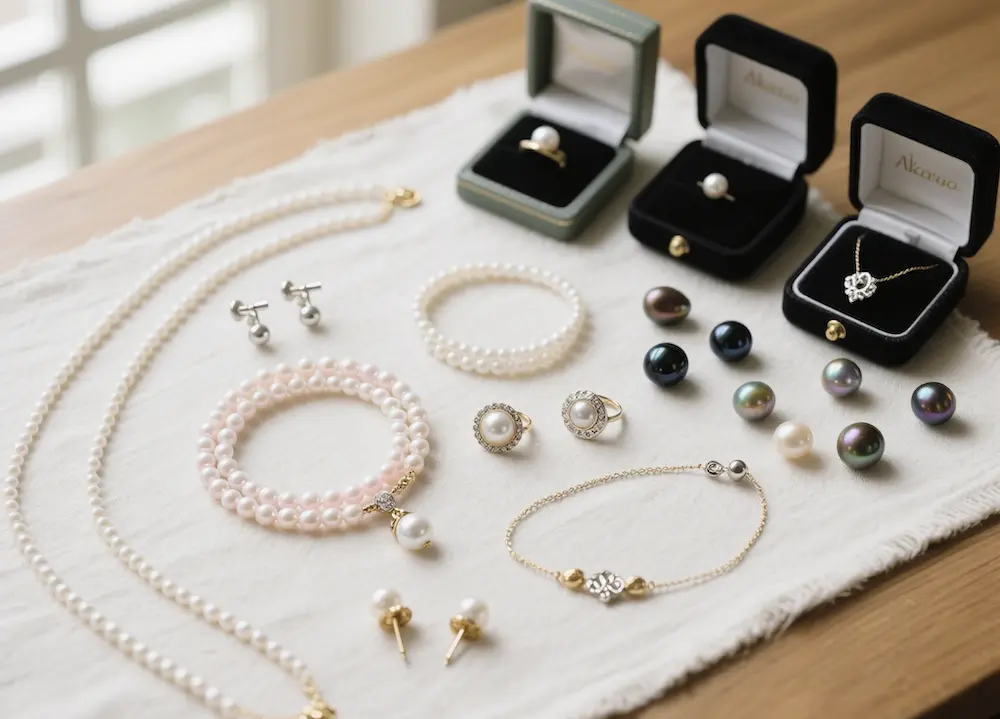
The pearl market’s really blown up lately, with tons of options from affordable freshwater to fancy South Sea pearls popping up everywhere online. This makes knowing how to buy pearls more important than ever. But here’s the catch: not all pearls are the same quality, and some sellers aren’t being straight about what they’re selling. I’ve seen way too many people get tricked by fancy ads and over-the-top prices.
1. Understanding Pearl Types: Your First Step in Smart Shopping
Before we get into how to buy pearls, it’s important to know what’s out there. There are four main kinds of cultured pearls. Each one has its own unique look and price range.
- Freshwater pearls are the most affordable, making them great if you’re just starting out with pearls. They’re grown in lakes and rivers, mostly in China. They have lots of natural colors. You get a lot for your money with these – you can find a really pretty necklace for under $100. They also have many different shapes, from perfectly round to really unique and irregular.
- Akoya pearls are the classic pearls everyone thinks of. They are perfectly round, shiny, and usually white or creamy with a hint of pink. These saltwater pearls come from Japan and are really the standard for traditional pearl jewelry. They cost more than freshwater pearls, but they have that amazing, mirror-like shine that just looks elegant.
- Tahitian pearls are the wildcards of the pearl world. Actually, even though they’re called Tahitian, these beautiful and unusual pearls are from French Polynesia! They’re known for their dark and mysterious colors – from charcoal gray to peacock green. These colors are natural, and because of their uniqueness, they’re on the pricier side.
- South Sea pearls are as luxurious as it gets. These big pearls can be up to 20mm in size. It takes years for them to develop their special, soft shine. People often call them the “Rolls Royce” of pearls because they are so fancy. They come from the biggest oysters that make pearls.
| Pearl Type | Size Range | Price Range | Best For |
|---|---|---|---|
| Freshwater | 6-12mm | $50-$800 | First-time buyers, everyday wear |
| Akoya | 6-10mm | $300-$3,000 | Classic elegance, special occasions |
| Tahitian | 8-15mm | $500-$5,000 | Bold fashion statements |
| South Sea | 10-20mm | $1,000-$15,000+ | Luxury investments |
You can often find better prices on these pearls if you work directly with a trusted pearl manufacturer, rather than buying them from regular stores.
2. The 7 Quality Factors: How to Buy Pearls Like a Pro
If you don’t know how to buy pearls, it’s important to understand how they’re graded. Experts use seven main things to decide a pearl’s quality, and knowing those will really help you figure out if you’re getting a good deal.
Luster: The Heart and Soul of Every Pearl
Luster is the most important thing to look for in a pearl. This is a crucial point when learning how to buy pearls. It’s that amazing, mirror-like shine that makes pearls so special. Really good pearls should reflect light so well that you can almost see your reflection in them. If a pearl has bad luster, it’ll look dull and boring.
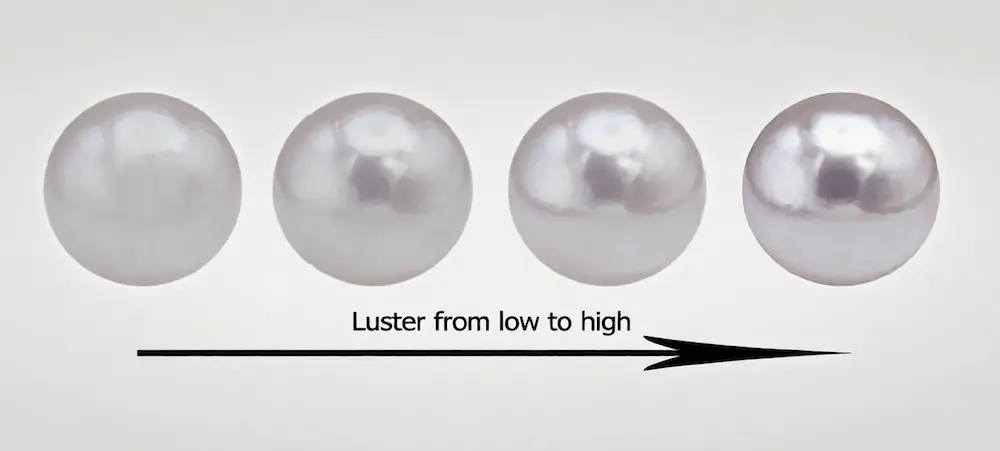
To check the luster, hold the pearl under a bright light. You should see clear, sharp reflections bouncing off its surface. If the reflections look blurry or weak, you’re probably looking at a lower quality pearl. Honestly, this one thing can really make or break how much a pearl is worth.
Surface Quality: Spotting the Flaws
Pearls aren’t going to be perfect – they come from nature! But how smooth the surface is still matters a lot. The best quality pearls (AAAAA grade) have surfaces that are very clean and have no marks. Lower quality ones will have more spots, bumps, or imperfections.
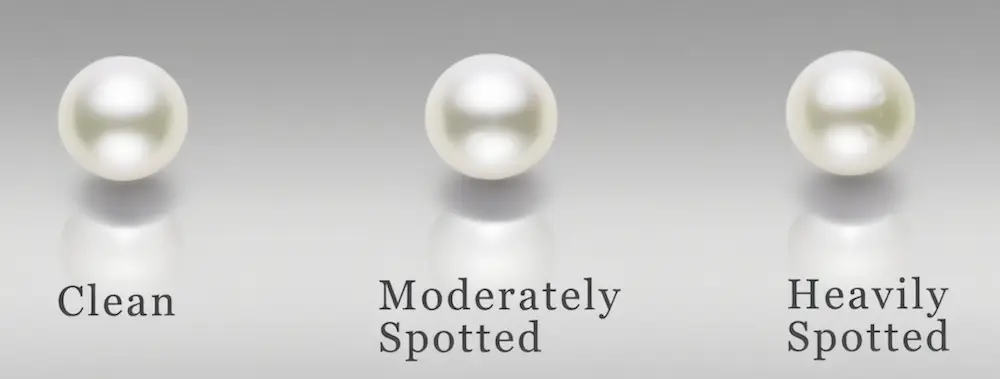
Don’t worry about small flaws that are hard to see. Those are normal and add personality to the pearl. But a good tip for how to buy pearls is to stay away from pearls that have clear cracks, deep holes, or are a different color, as these things will change how they look and how long they last.
Shape: From Classic to Creative
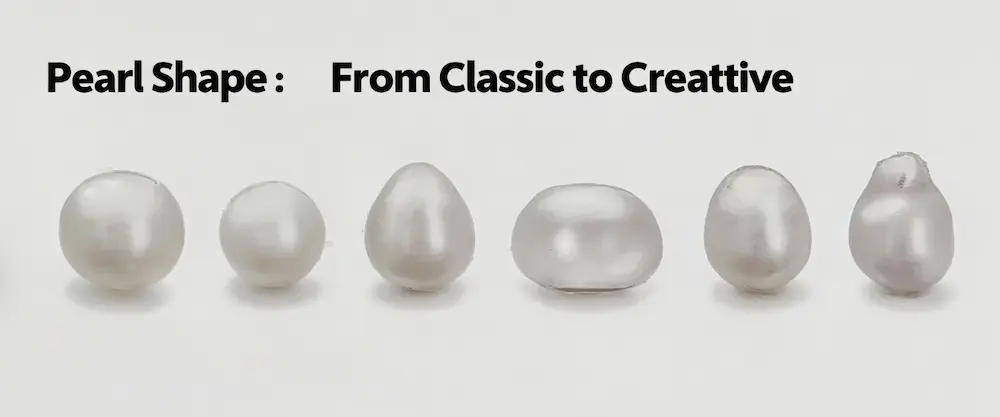
Perfectly round pearls are the most expensive because they’re the hardest to find. When considering how to buy pearls, don’t ignore the other shapes! They can be just as gorgeous and a lot cheaper. Pearls that are almost round still look great but cost less. And baroque or drop-shaped pearls can make really cool and unique jewelry!
When you’re buying pearl strands, the important thing is that they all look good together. Make sure the shapes and sizes of all the pearls go well with each other.
3. Decoding Pearl Grading Systems
The pearl industry uses two main grading systems, and understanding them helps you navigate pricing and quality claims when learning how to buy pearls effectively.
The C-B-A-AAAAA System
Most commonly used for Akoya and freshwater pearls, this system ranks pearls from C, B, A (lowest) to AAAAA (highest quality).
- Grade C: Low luster, many noticeable blemishes, off-round shape.
- Grade B: Fair luster, visible blemishes, slightly off-round shape.
- Grade A: Good luster, some blemishes visible, round to near-round.
- Grade AA: Very good luster, few noticeable blemishes, mostly round.
- Grade AAA: Good luster, some blemishes visible, round to near-round.
- Grade AAAA: High luster, few blemishes, mostly round.
- Grade AAAAA: Excellent luster, clean surface, round shape.
The Tahitian System (A-D)
Used specifically for Tahitian and South Sea pearls, this system runs from A (highest) to D (commercial grade).
| Grade | Luster Quality | Surface Quality | Shape |
|---|---|---|---|
| A | Excellent | 95%+ clean | Round to near-round |
| B | Good to High | 85%+ clean | Near-round to oval |
| C | Medium | 70%+ clean | Slightly off-round |
| D | Fair | 60%+ clean | Baroque acceptable |
Knowing how pearl grading works helps you avoid getting ripped off by sellers who might use fancy words to make their pearls seem better (and more expensive) than they really are.
4. Smart Shopping: Where and How to Buy Pearls
Online vs. Brick-and-Mortar: Weighing Your Options
You have a lot of options when you shop online. You can often get better deals, especially if you buy from wholesalers who specialize in pearls. Online shopping is a great place to start if you want to know how to buy pearls. You can easily compare a lot of choices without leaving your house, and you can often save a lot of money—sometimes even half or two-thirds of what you’d pay in a regular store!
It’s great to buy pearls online, but you need to be careful because you can’t see them in person before you buy them. Only buy from sellers you can trust who have a lot of clear pictures, a good return policy, and people you can talk to if you have questions. The company should show you real pictures of the exact pearls you’ll be getting, not just pictures that are similar.
You can touch and look at pearls in person before you buy them, which is very helpful for first-time buyers. You can see luster in person and learn from staff members who know a lot about it. The bad thing? Because of overhead costs, there aren’t as many options and prices are higher.
Red Flags: Protecting Yourself from Pearl Scams
Learning how to buy pearls safely means recognizing common tricks and deceptive practices. Here are warning signs to watch for:
Pearls that are artificially enhanced: Some sellers try to make pearls look better by treating them in some way, but they don’t tell you that they’ve done this. Watch out for pearls that look too perfect or have super bright, vibrant colors, particularly if they’re being sold at low prices.
Lying about where the pearls come from: Sometimes sellers say “Japanese Akoya” pearls when they’re actually cheaper freshwater pearls. Good sellers will give you a certificate that proves where their really high-end pearls are from.
Fake grading: If a seller says their pearls are “AAAAAA” grade, that’s a big red flag! Real pearl grading usually only goes up to AAAAA.
Prices that seem unbelievably low: If someone is selling “South Sea pearls” for just $50, they’re probably fake or really low quality that’s been heavily treated to look better.
5. Pearl Care and Investment Considerations
Protecting Your Pearl Investment
Proper care extends your pearls’ lifespan and maintains their beauty. This is a crucial step after you’ve learned how to buy pearls. Pearls are organic gems that need special attention compared to traditional gemstones.
Daily Care: Wipe pearls with a soft cloth after wearing to remove oils and perfume. Put pearls on last and take them off first to minimize exposure to cosmetics and hairspray.
Storage: Keep pearls separate from other jewelry to prevent scratching. Store them in soft pouches or lined jewelry boxes, never in plastic bags which can trap moisture.
Professional Maintenance: Have pearl strands restrung every 2-3 years if worn regularly. This prevents loss if the silk thread breaks and ensures knots between pearls remain tight.
Understanding Pearl Values and Trends
Pearl prices fluctuate based on supply, demand, and fashion trends. This is a key factor to understand when learning how to buy pearls. Currently, we’re seeing increased interest in colored pearls and unique shapes as consumers seek alternatives to traditional white strands.
Size matters significantly in pricing – each millimeter increase can double the cost of premium pearls. However, slightly smaller pearls often offer better value without sacrificing beauty.
Consider pearls as both jewelry and investment. High-quality Akoya, Tahitian, and South Sea pearls hold value well and can be passed down as family heirlooms. This is another important aspect of how to buy pearls.
6. Expert Tips for Different Budgets
Budget-Conscious Buyers ($50-$300)
Focus on freshwater pearls for maximum value. Look for well-matched strands with good luster, even if they’re not perfectly round. Consider shorter lengths (16-18 inches) which cost less than longer princess or opera lengths.
Timing matters – shop end-of-season sales and special promotions. Many pearl dealers offer significant discounts during slower periods.
Mid-Range Shoppers ($300-$1,500)
This budget opens doors to quality Akoya pearls and premium freshwater varieties. Focus on luster over size – a smaller pearl with excellent luster outshines a larger pearl with poor reflectivity.
Consider buying loose pearls and having them custom strung. This approach often saves money while ensuring perfect matching and preferred length.
Luxury Buyers ($1,500+)
At this level, focus on South Sea or fine Tahitian pearls. Size, rarity, and exceptional luster justify premium pricing. Consider building a pearl collection gradually rather than making one large purchase.
Work directly with pearl farms or authorized dealers to ensure authenticity and get the best prices on rare varieties.
7. Making Your Final Decision
When you’re ready to buy pearls, remember that personal preference matters as much as technical quality. Knowing how to buy pearls is about more than just the grades; the “best” pearl is one that makes you smile every time you wear it.
First, figure out how much you’re willing to spend and what you’ll be using the pearls for. If you plan to wear them every day, you’ll need to think about different things than if you’re only wearing them for special events. Also, think about the colors you usually wear. Cooler colored pearls look great with silver jewelry, while warmer tones go perfectly with gold.
Don’t rush into buying expensive pearls. A key part of how to buy pearls is taking your time to compare different options, read what other people are saying about them, and don’t be afraid to ask questions. Good, trustworthy sellers will be happy to answer your questions and give you detailed information about where their pearls come from and what makes them special.
Think about talking to a pearl expert who can help you choose. The Gemological Institute of America says that getting a professional opinion makes sure you’re paying a fair price for what you’re buying.
Most importantly, buy from places you trust. Whether it’s online stores, local jewelers, or even buying directly from a pearl farm, make sure they have a good reputation and a clear return policy before you spend a lot of money.
Learning how to buy pearls correctly transforms what could be an overwhelming experience into an exciting journey of discovery. With this knowledge in your toolkit, you’re ready to find pearls that will bring joy for decades to come.
When considering how to buy pearls, keep in mind, the best pearl purchase isn’t always the most expensive. It’s the one that matches your style and your budget, and makes you genuinely happy every time you wear it. Pearl experts at the Pearl Society International even say that the feeling you get from your pearls is often more important than how perfect they technically are.
Don’t rush, do some digging, and trust your gut feeling. The perfect pearls for you are out there somewhere, and now you’ve got the knowledge to go find them.
FAQs
Are Costco pearls good quality?
Yes—Costco’s pearls are usually solid quality for the price, though they’re not top-tier.
How much does a 1 pearl cost?
A single pearl can run anywhere from $10 to thousands, depending on type and quality.
How to pick a good pearl?
Look for sharp luster, smooth surface, and round shape—those are signs of a good one.
How to know if a pearl is real?
Rub it gently on your teeth—real pearls feel gritty, fake ones feel smooth.

